I implemented this code from another question, and it works really well.
The issue I am having is repeatedly mixing two colors slowly results in black. Here is an example of the effect.

I am using C#, and I have the RGBA of two colors, (background & foreground) in a Color32 type - 1 byte for red, green, blue and alpha. At the moment I am converting the 0-255 to 0-1 but I think there is some floating point conversion issues.
What's a way that won't have this effect?
EDIT: Here is the code I am using. currentColor is the canvas (background) and brushColor is the foreground.
float bg_r = ((float)currentColor.r) / 255.0f;
float bg_g = ((float)currentColor.g) / 255.0f;
float bg_b = ((float)currentColor.b) / 255.0f;
float bg_a = ((float)currentColor.a) / 255.0f;
float bg_r_a = bg_r * bg_a;
float bg_g_a = bg_g * bg_a;
float bg_b_a = bg_b * bg_a;
float fg_r = ((float)brushColor.r) / 255.0f;
float fg_g = ((float)brushColor.g) / 255.0f;
float fg_b = ((float)brushColor.b) / 255.0f;
float fg_a = (((float)brushColor.a) / 255.0f) * brush.pressure; // 0 - 1
float fg_r_a = fg_r * fg_a;
float fg_g_a = fg_g * fg_a;
float fg_b_a = fg_b * fg_a;
float col_r_a = fg_r_a + bg_r_a * ( 1.0f - fg_a );
float col_g_a = fg_g_a + bg_g_a * ( 1.0f - fg_a );
float col_b_a = fg_b_a + bg_b_a * ( 1.0f - fg_a );
float col_a = fg_a + bg_a * ( 1.0f - fg_a );
float col_r = col_r_a / col_a;
float col_g = col_g_a / col_a;
float col_b = col_b_a / col_a;
byte colR = (byte)Mathf.Clamp( col_r * 255.0f, 0.0f, 255.0f );
byte colG = (byte)Mathf.Clamp( col_g * 255.0f, 0.0f, 255.0f );
byte colB = (byte)Mathf.Clamp( col_b * 255.0f, 0.0f, 255.0f );
byte colA = (byte)Mathf.Clamp( col_a * 255.0f, 0.0f, 255.0f );
Color32 outputColor = new Color32( colR, colG, colB, colA );